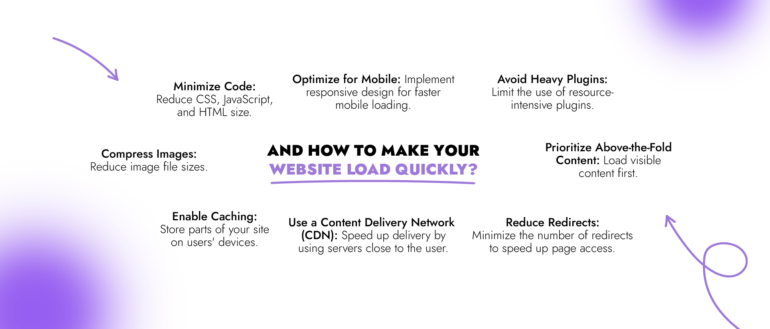You don’t use mobile marketing. Then, say goodbye to all your marketing efforts.
Ignoring it is not only a missed chance but also a bad business move that could leave your brand behind. Mobile devices are a tool that everyone uses every day. It would be the first thing people grab in the morning and the last thing they put down at night.
More than 80% of Americans are constantly using their mobile devices to access the Internet. Do you understand how important it is to optimize your website for mobile devices for your audience engagement? If you visited a website or an app and it didn’t show the content properly on your mobile device, would you continue reading or even buying a product from there? No, right?
You can turn every swipe, click, and search into a possible customer interaction or sale if you use mobile marketing properly. And how to do that? Let’s see how you can use mobile marketing to grab the attention of your audience and make your brand part of your customer’s everyday lives.
Understanding Mobile Marketing
One of the best digital marketing strategies for business growth is mobile marketing. What do we understand by saying mobile marketing? It means creating marketing strategies in a way that will reach a target audience who uses smartphones and tablets when accessing websites, SMS, emails, social media, etc.
In the USA, where mobile device usage is among the highest in the world, this approach is not just optional, it’s essential.
In the United States, mobile device usage trends reveal that Americans spend over five hours a day on their smartphones. Can you imagine how much is it? You have so many opportunities to grab their attention at that time. Ready to know how? We’ll walk you through the process, even though we know it’s not that easy.
Strategies for Mobile Marketing
Look at the people outside — on the bus, at the store, in the office, or even at an event — they are constantly using their phones. It has become an integral part of their daily lives, as they text, research, make calls, take pictures, and make purchases using that small device. Sometimes, they simply kill time by scrolling through social media platforms, looking at videos, pictures, or just funny reels. This is a reality and a trend you must keep pace with if you want your business to grow.
Now, let’s go through the strategies that will help you with your audience engagement.
- Responsive Design
First things first, responsive design is the top factor you should consider for reaching your U.S. audience on mobile. Why?
73.1% of web designers say that designs that aren’t responsive are the main reason people leave a website.
Responsive design makes sure that your website adapts smoothly to any screen size, giving people the best viewing experience possible. This is very important to keep potential buyers interested and lower bounce rates since a mobile site that isn’t well-built can quickly lose users.
For example, the Airbnb website adjusts to fit any screen size, so it’s easy for people to look at listings and book stays on their phones. Want to know how to make your design responsive?
- Use Fluid Grids: Make your layout in a way that it adapts instantly to the user’s screen size by using percentages and other related units instead of set units like pixels.
- Flexible Images: Make sure that images can change sizes within their container so that they don’t mess up the style or look funny on different devices.
- Media Queries: You can use CSS media queries to load different styles on different devices based on their screen size, direction, and resolution.
- Readable Text: Make sure that small screens can read the text without having to zoom in.
- Touch-Friendly Navigation: Make sure that navigation features like buttons, links, and menus can be clicked on with both a mouse and a finger.
- Minimize Use of Flash: Flash can slow down your site and isn’t supported on many mobile devices.
- Test on Multiple Devices: Always check your website’s performance on different browsers and devices to make sure it works well and gives users a good experience.
- Mobile SEO
Mobile SEO (Search Engine Optimization) makes sure that when people look on their phones, your site comes up high in the search results. This means making sure the site loads quickly, using layouts that work well on phones, and making sure it’s easy to use on a small screen.
Google’s mobile-first search now gives mobile-optimized sites more weight, so Mobile SEO is a must if you want to be seen. Test your website’s speed regularly on different browsers and devices to make sure it works well and gives users a good experience. Here are some strategies to consider:
- To improve your results and user experience, make sure your site runs quickly on mobile devices.
- Use layouts that work well on phones and change easily to fit different screen sizes.
- Make sure that your site’s menu and buttons make it easy to navigate on a small screen.
- As the use of virtual assistants grows, make sure your content is optimized for voice search. Use long-tail keywords that sound like spoken questions to make your site work best with the way people talk in real life. Use question words and sentences that people often use in voice searches, like “how,” “what,” “where,” “when,” and “why.”
- Make sure your business is set up for local SEO. Use terms and sentences that are related to the area in your content.
- Use schema markup to help search engines understand what your content is about. For example, you can use structured data to tell search engines that a certain piece of text is the title of a book, the review of a product, an event’s date and location, or many other types of information.

- Location-Based Marketing
Businesses can target their customers based on where they live with location-based marketing. Companies can send personalized marketing texts to people in certain places by using GPS technology built into smartphones. When people turn on their location services, they allow apps to provide personalized content and services based on their real-time geographical position, such as local search results, navigation, and targeted advertisements.
For instance, through the use of location-based marketing, Sephora is able to give clients exclusive offers whenever they are near a store.
- Mobile App Promotion
To get people to download your app, give them access to exclusive content or features that other users can’t get. For example, Duolingo has in-app rewards that encourage people to join and use the app. To keep users interested, use push notifications for app changes and custom deals.
- Use Chatbots for Instant Communication
Implement AI-driven chatbots on your mobile site or app for instant customer support. This will make sure that your users feel supported as they use your platform. You can also use these chatbots to give users personalized buying advice based on their questions and choices, making ideas that fit each person’s likes and needs.
- SMS Marketing
Sending promotional ads or business messages through text messages for marketing reasons is called SMS marketing. Most of these messages are sent only to customers who have agreed to receive them. The open rate for SMS marketing is high, which makes it a good way to get in touch with your audience directly.
For example, Domino’s Pizza sends out special deals through SMS marketing, and all a customer has to do to place an order is return with a text message.
- Mobile Advertising
Mobile ads can show up in apps, social media, or web browsers. For example, Coca-Cola has used social media to run mobile ad campaigns that target users based on their position and hobbies. Let’s check mobile advertising strategies:
- Put ads in mobile apps that are aimed at specific groups of users.
- Show ads to people based on where they are in the world.
- Send ads straight to people’s cell phones with SMS marketing.
- For focused efforts, use mobile advertising choices on social networks.
- Use short, interesting videos on mobile devices to get people’s attention.
- Put ads in the mobile search engine results for questions with a lot of purpose.
- Ads should be blended in with app content or social feeds so they don’t get in the way.
- Localized Mobile Marketing
When you use localized mobile marketing, you make marketing messages that are specific to the language, society, and habits of the people in your area. For instance, a national store could send different deals to customers in different states based on local holidays, events, or personal tastes. This would make their marketing more relevant and effective. So, next time you think of strategies for mobile marketing in the U.S., don’t overlook localized mobile marketing.
Businesses that want to stay competitive need to keep up with the latest mobile marketing trends. Augmented reality (AR) is becoming more popular in marketing, robots are being used for quick customer service on mobile devices, and AI is being used to make marketing more personal. Next time, you want to make your business mobile-friendly, double-check our strategies.
FAQs
- How does mobile marketing target their audience?
By using data on user behavior, preferences, and location.
- How do marketers reach their target audience?
Through social media, SMS, email, and targeted ads on apps and websites.
- How can I promote my mobile marketing?
Use SEO, content marketing, in-app ads, and social media campaigns.
- How do I reach my audience?
By tailoring content and ads to match their interests and habits, using platforms they frequent.




